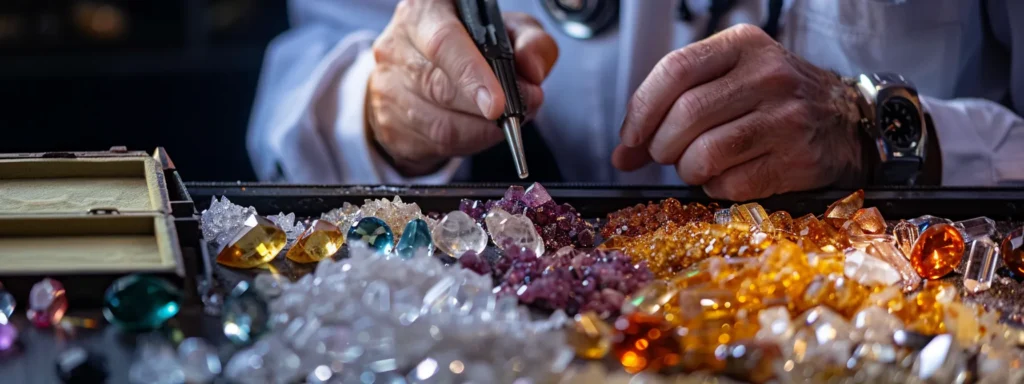Gemstones Therapy
Essential Gemological Tools for Identifying Natural Gemstones
Essential Gemological Tools for Identifying Natural Gemstones
Understanding the essential tools for identifying natural gemstones is crucial for anyone passionate about gemology, whether you’re evaluating real gemstone bracelets or considering their sale price. Imagine your future filled with expertise and insight as you learn the intricacies of these valuable resources. By acquiring the right knowledge and tools, you can navigate your choices with confidence and perhaps even consider the credit options available for expanding your collection. The journey into gemology opens doors to endless possibilities, from basic identification to professional evaluation. Ready to discover the tools that set you on this path? Keep reading to explore the must-have items and insights that will elevate your expertise.
Key Takeaways
- Invest in high-quality gemological tools for effective gemstone identification and analysis
- Proper lighting is essential for revealing color nuances and inclusions in gemstones
- Utilize digital tools and apps to streamline the gem identification process
- Regular maintenance of gemological tools prolongs their lifespan and ensures accurate results
- Engaging with experienced gemologists enhances your knowledge and skills in gemology
Recommended Gem Tools
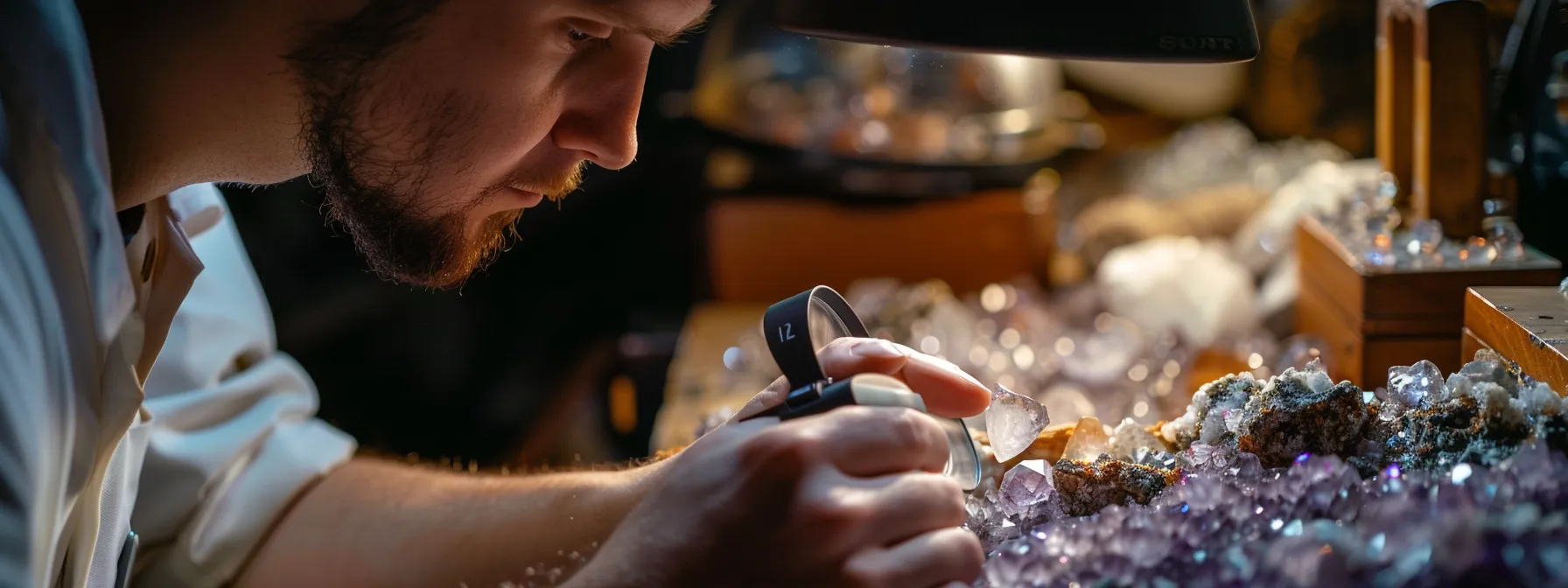
To accurately identify natural gemstones, investing in quality gemological tools is essential. A reputable brand will offer equipment that withstands the test of time, such as a reliable loupe for inspecting gemstones up close. When you choose a loupe, look for one that magnifies at least 10x to clearly view inclusions and details in stones like malachite real gemstone bracelets.
In addition to a loupe, proper lighting is vital for assessing the quality of real gemstone bracelets. An LED lamp provides the right illumination, allowing you to examine the color and clarity of your stones effectively. The right lighting can reveal features that might otherwise be missed under normal conditions, enhancing your photography skills when capturing images of your collection. imagine your future
Lastly, consider integrating digital tools into your gem identification process. Using an app designed for gemology can streamline your workflow and offer quick access to reference materials. If you have questions or need support, reach out to your preferred brand via their email address for expert guidance on gemstone identification.
- Invest in quality gemological tools.
- Choose a reputable brand for reliability.
- Utilize a strong loupe for close inspection.
- Employ an LED lamp for effective lighting.
- Enhance photography with proper illumination.
- Incorporate digital tools for streamlined identification.
- Contact brands via email address for support.
As you uncover the brilliance of gem tools, it’s time to dive deeper into the essentials that will elevate your gemology journey. Get ready to equip yourself with the must-have instruments that will enhance your understanding and appreciation of these stunning treasures.
Gemology Tools: The Essentials
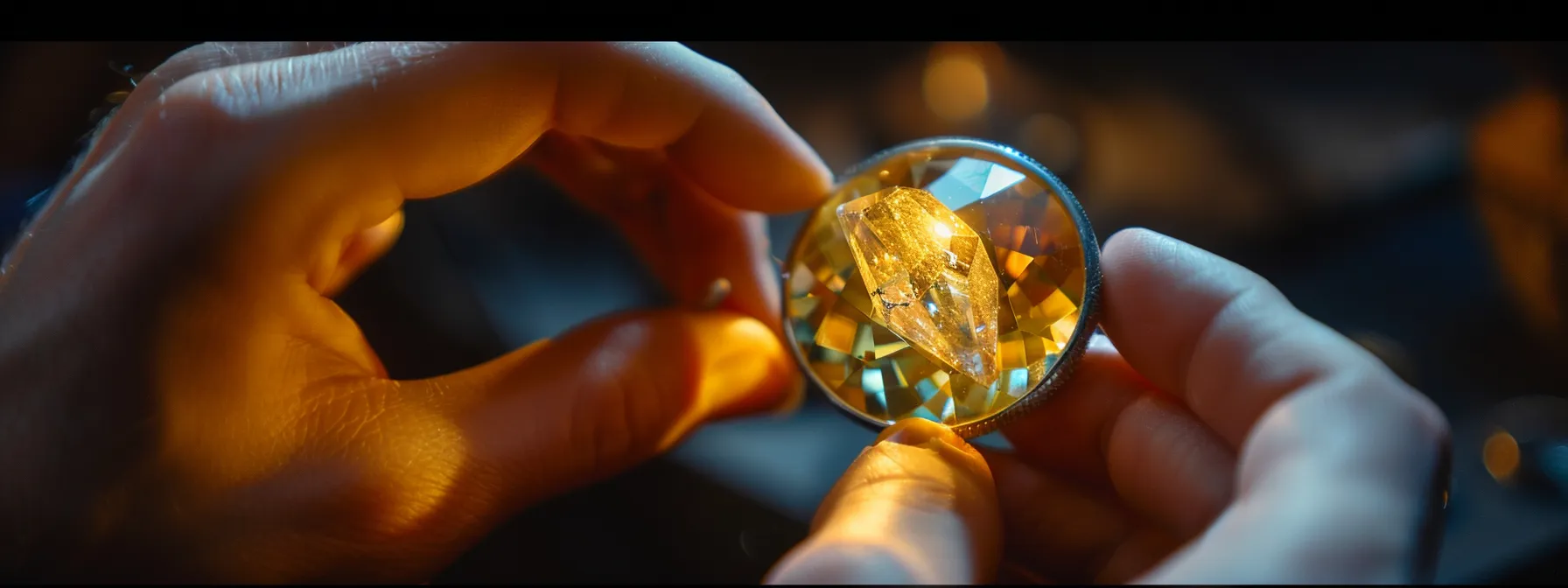
When delving into the world of gemology, equipping yourself with the right tools is key to effective gemstone identification. A loupe aids in close-up inspections, allowing you to observe imperfections and the intricate crystal structures of gems like emerald. For a deeper examination, employing a microscope provides enhanced magnification to evaluate the stone’s internal features. Understanding light interactions is essential, so utilizing a refractometer can measure the refractive index, while the dichroscope offers insights into pleochroism, the ability of a crystal to show different colors when viewed from different angles. A balance beam scale helps you determine the gravity of the gemstone, helping to differentiate between similar-looking stones. Further, heavy liquids can assist in identifying specific gems based on their density. Utilize a polariscope to analyze the optical properties of gemstones and explore how they interact with polarized light. Lastly, a spectroscope can reveal information about the gemstone‘s composition through its unique spectral signature. Mastering these tools elevates your gemological expertise and enhances your understanding of these remarkable natural treasures.
Loupe
A loupe is an indispensable tool in the field of gemology, providing essential magnification to thoroughly inspect gemstones. With a standard magnification of 10x or more, a quality loupe reveals intricate details that determine a gem’s authenticity and value, including its carat weight and clarity. As recommended by the Gemological Institute of America, investing in a high-quality loupe should be a priority for anyone serious about gem identification.
- Understand the importance of magnification in gemology.
- Prioritize quality when selecting a loupe.
- Utilize a loupe to assess carat weight and clarity.
- Follow recommendations from the Gemological Institute of America.
Microscope
A microscope is an invaluable asset in gemstone evaluation, particularly when observing the intricate details of stones like moissanite and tanzanite. By utilizing precise optics, you can differentiate between these gemstones with ease, revealing subtle characteristics that can affect value and authenticity, such as diamond color grading and the presence of inclusions. Remember, employing calipers alongside your microscope enhances measurements, ensuring careful assessment of each gem.
Refractometer
A refractometer is an essential instrument in gemology for measuring the refractive index of minerals, which helps to identify gemstones accurately. The device, often made of stainless steel, utilizes diffraction grating to evaluate how light refracts as it passes through a gemstone. This ability to determine characteristics such as dichroism—where a mineral exhibits different colors at different angles—makes the refractometer invaluable for gem identification.
Balance Beam Scale and Heavy Liquids
To effectively assess the specific gravity of gemstones, employing a balance beam scale is essential. This tool enables you to measure the weight of a gem accurately, which you can then compare to its volume to determine density. Using heavy liquids in conjunction with this scale enhances your ability to differentiate between similar stones by providing a clearer understanding of their physical properties, which ultimately affects their price. Pair this setup with a flashlight to inspect for inclusions and a loupe or magnifying glass for closer examination, ensuring a comprehensive analysis of your gemstones.
Dichroscope
A dichroscope is a powerful tool that allows you to evaluate the pleochroism of gemstones, revealing their color variations when viewed from different angles. By observing these colors through the field of view, you can gain insights into the birefringence and identify specific characteristics of the stone. Utilizing this instrument, particularly in conjunction with ultraviolet light, enhances your ability to determine the gem’s optical properties and authenticity, aligning with the standards set by the Gemmological Association of Great Britain.
- Understand pleochroism and its significance in gemstones.
- Learn how birefringence affects color perceptions.
- Utilize ultraviolet light to enhance gem evaluations.
- Follow the guidelines of the Gemmological Association of Great Britain.
Polariscope
A polariscope serves as an essential instrument for analyzing the optical properties of gemstones, such as quartz and spinel. By passing light through the gemstone, you can study its response to polarized light and evaluate features like fluorescence. This tool complements the use of a dichroscope, allowing for a thorough examination of the stone while employing tweezers for precise handling during your assessments.
- Utilize a polariscope for optical analysis.
- Examine fluorescence in gemstones.
- Enhance evaluations by combining with a dichroscope.
- Handle gems carefully with tweezers.
Spectroscope
A spectroscope is a vital tool that enables you to analyze the composition of gemstones by interpreting their unique spectral signatures. When examining a ruby, for instance, the spectroscope reveals essential details such as absorption bands that indicate the presence of chromium responsible for its vibrant red hue. This tool aids you in understanding how light interacts with the stone, allowing you to assess its refraction and enhance your skills at the point of sale.
With the foundational tools in hand, you’re ready to broaden your gemology toolkit. Let’s dive into the diverse array of miscellaneous tools that will elevate your skills and enhance your discoveries.
Miscellaneous Gemology Tools

In addition to the primary tools for gemstone identification, consider a selection of miscellaneous gemology tools that enhance your skillset and precision. A jeweler’s eye provides clarity and focus when examining finer details within gems, while a diamond detector confirms the authenticity of stones using the principles of light interaction and refractive indices. Incorporating hardness sets into your toolkit allows you to test the durability of gems against various minerals and solids, including calcite. Streak testing materials help determine the color of a mineral‘s powder, revealing critical information about its composition. Utilizing a Chelsea filter can further assist you in differentiating gemstones based on their absorption properties. Each of these instruments contributes to a deeper understanding of the unique attributes of natural stones, empowering you as a lapidary to make informed assessments in your gemological journey.
Jeweler’s Eye
A jeweler’s eye is a critical tool that enhances your ability to examine gemstones with precision and clarity. This instrument provides you with the necessary focus to scrutinize intricate details and subtle nuances in each gemstone, which may reveal essential information about authenticity and quality. By integrating a jeweler’s eye into your toolkit, you empower yourself to make informed assessments of natural stones:
- Enhances clarity and focus during examinations.
- Reveals subtle details in gemstones.
- Supports informed assessments of quality and authenticity.
Diamond Detector
A diamond detector is a vital instrument in your gemology toolkit, specifically designed to confirm the authenticity of diamonds. By utilizing specific light interactions and measuring the refractive indices, this tool helps distinguish genuine diamonds from simulants, such as cubic zirconia. Incorporating a diamond detector allows you to enhance the accuracy of your gemstone evaluations:
Hardness Sets
Hardness sets are invaluable for assessing the durability and resistance of various gemstones. By comparing the hardness of your specimen against established minerals, you can effectively determine its position on the Mohs scale, which helps you understand how well a gem will fare against scratching and wear. This knowledge not only aids in identification but also informs decisions regarding the care and maintenance of gemstones in your collection.
Streak Testing Materials
Streak testing materials allow you to identify gems by examining the color of the streak they leave when rubbed against a porcelain streak plate. This method reveals the true color of a mineral in its powdered form, providing valuable information that aids in differentiation. Utilizing this technique can enhance your ability to ascertain the composition of gemstones and guide your evaluations effectively:
- Helps identify minerals based on streak color.
- Provides insights into gemstone composition.
- Enhances differentiation skills in gemology.
Chelsea Filter
The Chelsea filter is an important tool that assists you in distinguishing specific gemstones based on their absorption characteristics. By using this filter, you can identify certain stones by the color they exhibit when viewed through the filter, helping you you determine authenticity and value. Understanding how to utilize the Chelsea filter will enhance your gemological skills and make your evaluations more precise:
- Aids in identifying gemstones based on color changes.
- Reveals absorption properties of natural stones.
- Enhances accuracy in gemstone evaluations.
To truly appreciate the fine details of your gemstones, the right lighting can make all the difference. Brighten your lab experience and elevate your craftsmanship with the perfect illumination techniques.
Lighting for Your Lab
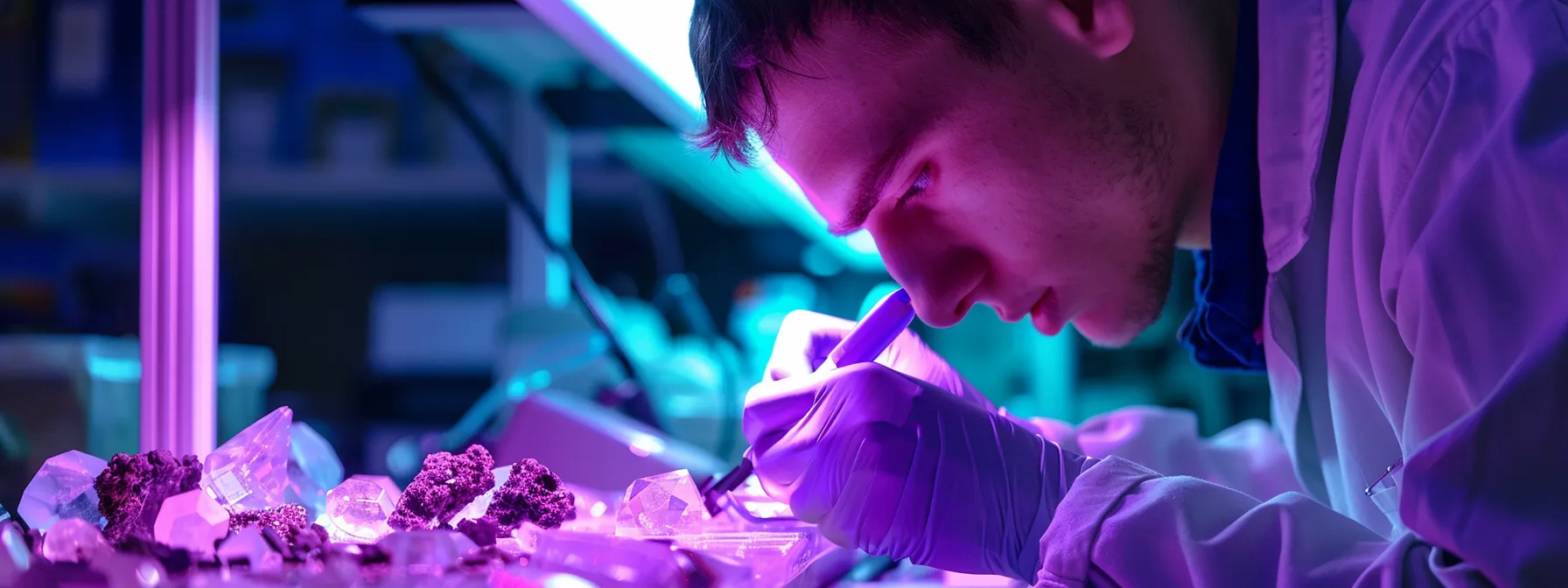
Incorporating ultraviolet light into your gemology lab setup enhances your ability to identify and evaluate natural gemstones significantly. This specialized lighting reveals subtle characteristics that are not visible under standard illumination, such as fluorescence and certain inclusions. By using ultraviolet light, you can gain valuable insights into the authenticity and quality of gemstones, allowing you to observe how various stones respond to different wavelengths. This tool not only aids in differentiation but also enriches your overall understanding of gemstones, empowering you to make well-informed assessments in your gemological endeavors.
Ultraviolet Light
Utilizing ultraviolet light in your gemology lab transforms your gemstone evaluation process. This specific lighting reveals hidden features, such as fluorescence and unique inclusions, which may go unnoticed under regular lighting conditions. By integrating ultraviolet light into your assessments, you gain deeper insights into each stone’s authenticity and overall quality, enhancing your expertise in gem identification.
Transitioning from illumination techniques to practical wisdom, the journey into the world of lighting reveals vital insights for newcomers. Equip yourself with essential advice that will spark your creativity and lay a solid groundwork for your exploration.
Advice for Beginners

As you begin your journey into gemology, prioritize investing in basic tools that will support your gemstone identification efforts. A quality loupe should be your first acquisition, as it allows you to closely examine the details and imperfections in gems, providing you with crucial insights about their authenticity and quality.
In addition to a loupe, create a well-lit workspace to assess your gemstones effectively. Consider incorporating an LED lamp or a portable light source, as proper illumination reveals color nuances and inclusions that inform your evaluation. Observing gemstones under varying lighting conditions can enhance your understanding of their characteristics.
Lastly, don’t hesitate to reach out to experienced gemologists or online communities for guidance. Engaging with others who share your passion will enable you to learn from their experiences and expand your knowledge base. Embracing a supportive network will enrich your skillset and reinforce your commitment to mastering the art of gemology.
Ready to take your gemology knowledge to the next level? Prepare yourself for an interactive quiz that will test your understanding and sharpen your skills!
Gemology Tools Sample Quiz
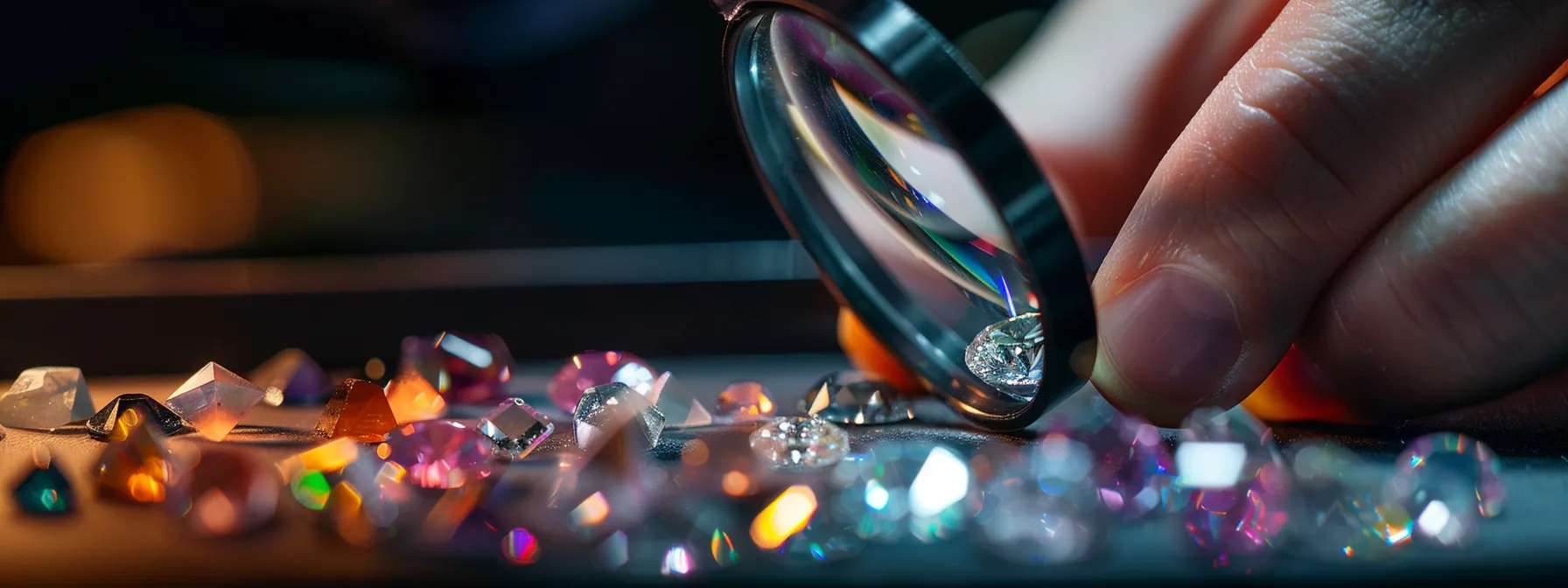
To solidify your understanding of gemological tools and their applications, a quiz can serve as an effective way to test your knowledge. This quiz consists of a series of questions designed to challenge your familiarity with essential equipment, their functions, and their significance in gemstone identification. You’ll encounter inquiries ranging from the purpose of a loupe to the specific applications of refractometers and dichroscopes. By engaging with these questions, you can assess your grasp of crucial concepts and reinforce your learning. Whether you’re a novice looking to enhance your foundational skills or someone with experience seeking to validate your expertise, this quiz will prove beneficial in your gemological journey.
Question 1
Question 1 assesses your understanding of the loupe, a fundamental tool in gemology. Knowing the magnification power and specific uses of a loupe will help you locate inclusions and fine details within gemstones. Reflect on how this tool aids in distinguishing authentic gems from imitations, ensuring you can make informed evaluations in your gemological practice.
Question 2
Question 2 focuses on the importance of a microscope in gemological evaluations. Understanding how this instrument reveals intricate details within gemstones allows you to discern subtle characteristics that affect their authenticity and value. Reflect on the specific features a microscope can help you identify, such as inclusions or crystal structures, which are pivotal in your assessment process.
Question 3
Question 3 challenges your comprehension of the refractometer, an indispensable tool in gemology for measuring a gemstone‘s refractive index. Recognizing how to operate this instrument allows you to assess various gemstones accurately, confirming their identity and characteristics. Consider how this knowledge influences your evaluations and contributes to more informed decisions in your gemological practice.
Question 4
Question 4 evaluates your understanding of the polariscope, a key instrument in assessing the optical properties of gemstones. Mastering this tool allows you to analyze how gems interact with polarized light, revealing critical characteristics that might influence your identification process. Reflect on the significance of fluorescence and how the polariscope can enhance your evaluations in identifying unique gemstones.
Question 5
Question 5 evaluates your grasp of the dichroscope, a vital instrument for analyzing color variations in gemstones. Understanding how to utilize this tool effectively allows you to determine its pleochroism and identify key characteristics that contribute to the stone’s overall value. Reflecting on how the dichroscope operates will deepen your proficiency in gemstone assessment:
Question 6
Question 6 challenges your understanding of the balance beam scale, which is crucial for determining the specific gravity of gemstones. This tool allows you to measure the weight of a stone and compare it to its volume for an accurate density assessment. Knowing how to use a balance beam scale effectively will enhance your gem identification skills and inform your evaluations.
Question 7
Question 7 invites you to evaluate your knowledge of heavy liquids and their role in gemstone identification. Familiarizing yourself with the concept of using heavy liquids will improve your ability to differentiate gems with similar appearances based on their specific gravity. Understanding this technique is essential for any gemologist seeking to refine their skills.
Keep this summary in mind as you reflect on the tools discussed:
- Loupe – for inspecting details and clarity.
- Microscope – reveals intricate internal characteristics.
- Refractometer – measures the refractive index for accurate identification.
- Balance beam scale – determines specific gravity and density.
- Heavy liquids – differentiate gemstones based on density.
- Dichroscope – analyzes color variations in gemstones.
- Polariscope – assesses the optical properties of gem materials.
Question 8
Question 8 prompts you to evaluate your familiarity with the diamond detector, a critical tool used to confirm the authenticity of diamonds. Understanding its functionality enables you to differentiate between real diamonds and simulants, thereby enhancing the accuracy of your gemstone assessments. Engage with the concept behind this tool to refine your evaluation process and ensure your gemological expertise remains sharp.
Question 9
Question 9 assesses your knowledge of miscellaneous gemological tools and their significance in gemstone evaluation. Familiarize yourself with the critical role that tools like the hardness tester and diamond detector play in confirming a stone’s authenticity and durability. Understanding these instruments enhances your overall proficiency in identifying and differentiating gemstones effectively:
Question 10
Question 10 invites you to examine your understanding of the various gemological tools available and their specific roles in identifying natural gemstones. Reflect on the importance of using the right equipment for accurate evaluations, ensuring you have a comprehensive grasp of how each tool contributes to your assessments. This knowledge will empower you to make informed decisions and further your ability to distinguish between genuine and imitation stones.
Question 11
Question 11 encourages you to critically evaluate your understanding of the importance of gemological tools in your identification process. Reflect on how using the right tools not only enhances your ability to differentiate between genuine gemstones and imitations but also bolsters your confidence in making accurate assessments. Familiarity with each tool’s function will empower you to navigate the complexities of gemology with greater precision and expertise.
Question 12
Question 12 challenges you to reflect on the integration of gemological tools in your overall identification process. Consider how each tool enhances your understanding of gemstones and contributes to accurate evaluations. By grasping their specific applications, you can refine your skills and approach, elevating your gemological expertise to new heights.
Question 13
Question 13 prompts you to assess how well you understand the interplay between gemological tools and their specific applications in the identification process. By considering the context in which each tool operates, you can better appreciate how they complement one another in delivering accurate results. Evaluating your expertise in tool usage will ultimately enhance your efficacy in distinguishing natural gemstones from imitations.
Question 14
Question 14 assesses your awareness of the importance of proper maintenance for your gemological tools. Understanding how to care for each piece of equipment not only prolongs its lifespan but also ensures accurate results in your gemstone evaluations.
Emphasizing the significance of tool upkeep reinforces your competency as a gemologist. By integrating regular maintenance into your routine, you protect your investments and enhance your overall gemological proficiency.
Question 15
Question 15 encourages you to evaluate your understanding of the role that experience plays in mastering gemological tools. Reflecting on your practical usage of these tools will help you recognize the patterns and nuances inherent in gemstone identification, allowing you to refine your techniques over time. This self-assessment is vital in solidifying your expertise and advancing your ability to distinguish natural gemstones from synthetics.
Question 16
Question 16 challenges your understanding of the importance of proper storage and handling of your gemological tools. By ensuring that each piece of equipment is stored correctly, you protect against wear and damage, which can significantly impact their performance. Regular assessments of your tools’ condition will further enhance your capability in gemstone identification.



